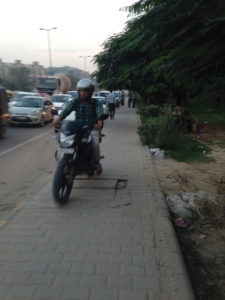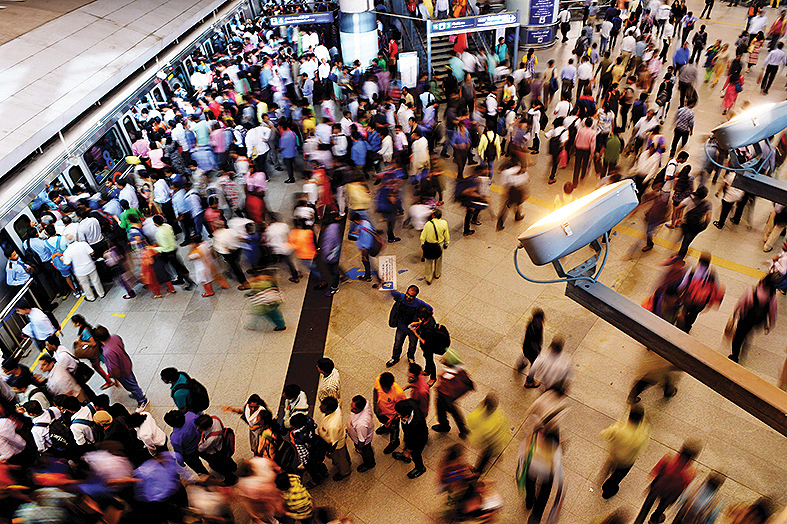Discussions on Master Plan 2041 have thrown up the need for a city where people drive less, use more public transport and exercise the option to walk
Can you see Delhi as being Singapore? That is Chief Minister Arvind Kejriwal’s promise if the Capital is given statehood. But even as Master Plan 2021 nears its deadline, it is clear that most of the goals have not been successfully implemented. Now, the Plan for 2041 is being worked on, with the help of National Institute of Urban Affairs (NIUA) — the first time that Delhi Development Authority (DDA) is involving an agency in the exercise.
One of the most important aspects in a plan should be the city’s transport system. Singapore, the city Kejriwal would like Delhi to emulate, has one of the best and most affordable public transport systems. In the case of our Capital city, it is dogged by traffic jams, despite the ever-expanding Metro rail network which cannot solely support the entire population.

What the city also needs, amongst other things, is introduction of services which would shift the car user base to public transport, while also easing traffic flow by making travel on foot and on bicycles a go-to method.
Take London, for example, whose 2041 plan is for ‘healthy streets and healthy people’. This means including travel of 30 mins — which is to get people to cycle and walk to places — and seeing that there are zero dangers on the road, zero emission, and less cars.
But in Delhi the pedestrian areas are over-run by foliage, trees, hawkers, open drains and even two-wheelers, which make them inaccessible and dangerous for people. According to statistics put out by Delhi Traffic Police, 1,500 pedestrians die in Delhi each year.
Making the city truly smart would also necessitate limiting the use of carbon-emitting vehicles. That too can be done by allocating more space for people to walk and cycle.
Connecting modes
Alex Williams, Director at Transport for London, who was part of a conference by DDA and NIUA for discussions on Master Plan 2041, had pointed to his own city’s example for a lesson on how mobility can be eased.
In London, walking, cycling and public transport is a mode taken by 63% of the people — with 37% opting for other modes like cars and taxis. This number is up from 53% and 47% in 2015 respectively.
One of the main reasons for a transport system being successfully run in London is that all the networks come under one person, the mayor. “Statutory responsibility on one person (here the mayor) is very important. That there is one point of contact and there’s a strategy with one person”, Williams said.
In Delhi, however, there are different authorities sparring over the networks that they control. This lack of cohesion has impacted the work that should be carried out.
Williams pointed out that before the formation of TFL under the Greater London Authority in 2000, the system was in “chaos”. Now everything, including the underground (metro services), bus, rail, road and others like car, ship, bus, taxi, and cycle come under one authority which also means there’s an ease of cross-subsidisation. “Every Monday he (the mayor) gets a track of who is riding the metro…You won’t get anywhere in Delhi without proper integration”, he added.
The problem that OP Aggarwal, CEO of World Resources Institute India, pointed out is linked to this same issue of lack of unification.
He said that transport is essential while making the Master Plan as it connects people to jobs, education, healthcare and recreation, adding to the movement of the city being the lifeline. Currently, what has been happening is that most authorities think that the solution to the problems of the city is to ‘build build build’.
“Flyovers didn’t help. We cannot build our way out of congestion”, he said, adding that planners must get in the game of mass transit network instead.
Much of the city is in a constant state of construction. Either building roads, patching up roads that have potholes, or digging up perfectly good roads to put in electrical wires or build sewage systems.
In terms of flyovers, the Rao Tula Ram Marg flyover has been a bottleneck on the Outer Ring Road since 2010. Another major area that has huge amount of traffic during peak hours is the Barapullah project which has already missed three deadlines.
But building of these flyovers means more access for vehicles. The answer should be to meet the challenge of mobility while lowering the consumption of vehicles, as Aggarwal puts it.
Affordability is not as important as quality in inducing commuters to switch from car to public transport. The authorities should provide a variety of services; availability on demand; door-to-door service; reliability; free of hassle; ease of boarding; quick, safe, clean and comfortable.
But for all this he points out what is critical, “to have a unified metro transport facility”. Instead, what we have is “too many agencies dealing with transport and none of them speak to each other”.
The success of the next Master Plan thus seems elusive unless and until all the agencies involved work in tandem with each other.





